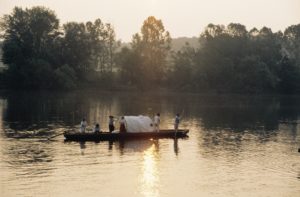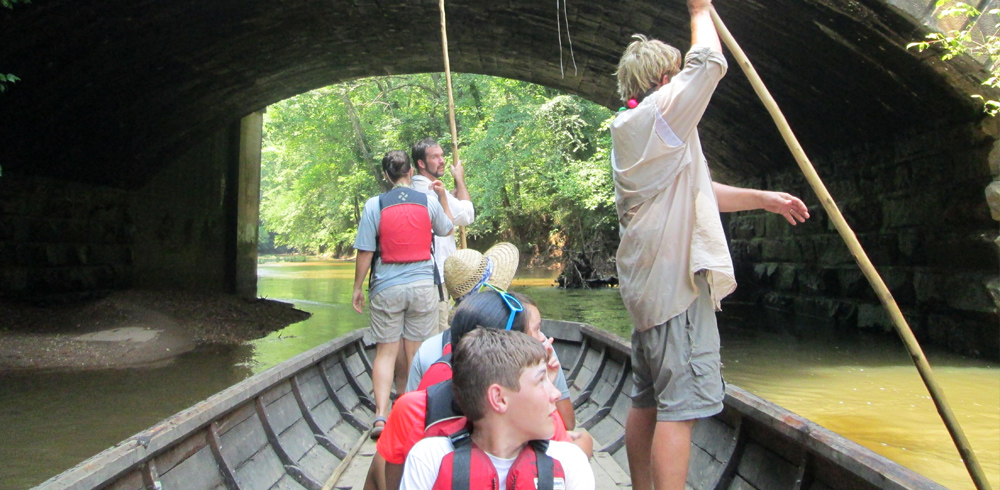The James River has a long and storied history from the birth of our nation, to westward expansion of the colony to the interior of Virginia. Early settlers of Virginia and of the James River basin viewed the river as a lifeline to the rest of the world and looked to it to provide resources that early pioneers could not have done without.
In 1775, an entrepreneur, agriculturist and businessman Anthony Rucker of Amherst County, saw that there was even more for the James River to offer by providing a means of shipping goods in larger quantities, over farther distances, in less time. Rucker saw the potential of transporting many tons of cargo down the James River in a time where getting agricultural goods in central and western Virginia to market was a lengthy and inconsistent process. Although shipping goods on waterways was no new practice, transporting loads on the river weighing thousands of pounds in a very shallow and rock filled river with lots of geology to contend with had seldom been seen on this scale.
Anthony Rucker would design and build the first of what is known to be the James River Batteau. These wooden vessels are 40 – 50 foot long, 6 foot wide flat bottom boats with pointed nose cones that could carry loads approaching 10,000 pounds while only drafting 12 – 14 inches of water. These craft were able to navigate unaltered sections of the James River complete with shoals, boulders, strainers, flo oding, and unforgiving rapids.
oding, and unforgiving rapids.
The launch of the first batteau was in 1775 and was attended by Thomas Jefferson. Jefferson would also be around almost 40 years later to witness the patent submitted by Anthony Rucker approved to stake claim of his specific boat design. Although the patent was disputed by many, saying that many watercraft such as the batteau had been operating on the James for some time before Rucker’s design took the river, it was eventually recognized that Rucker’s specific hull and keel design was different from all others before, in both success and longevity.
River travel utilizing the batteau was to be short-lived however, as the canal system was completed linking Richmond to Lynchburg and other points upriver, boats that could navigate the narrow channels and sluices were cast aside for Packet Boats that ran a lot deeper in the water of the Canal but could carry quite a bit more tonnage of cargo on them. The once revolutionary batteau was then relegated to smaller tributaries of the James. Eventually after many floods and a slow and expensive rebuild of the Canal System, the batteau were replaced by an emerging form of transportation that was cheaper and easier to assemble or replace, the railroads.
This important footnote in our history remembers the ingenuity and the drive to increase connection of a growing colony and emerging independent country to allow itself to grow from within. Early pioneers such as Anthony Rucker set the precedent for innovation to overcome the challenges of a growing country and a changing world. He utilized our beloved James River to help establish and advance the cause of the State of Virginia and the United States during one of the most pivotal times in our history as a nation.
Today, we celebrate this river faring heritage by a week long festival that floats the old batteau route, winding from Lynchburg to Richmond in re-creations of these huge wooden boats. Called the James River Batteau Festival, the boats and crews do their best to give festival goers the feeling that they have stepped back in time to 1775 to experience a little bit of what is was like to live and work on the James River. It defines the notion that life on the river is hard work and we should not take lightly the sacrifices those that came before us made to help our young country flourish.

